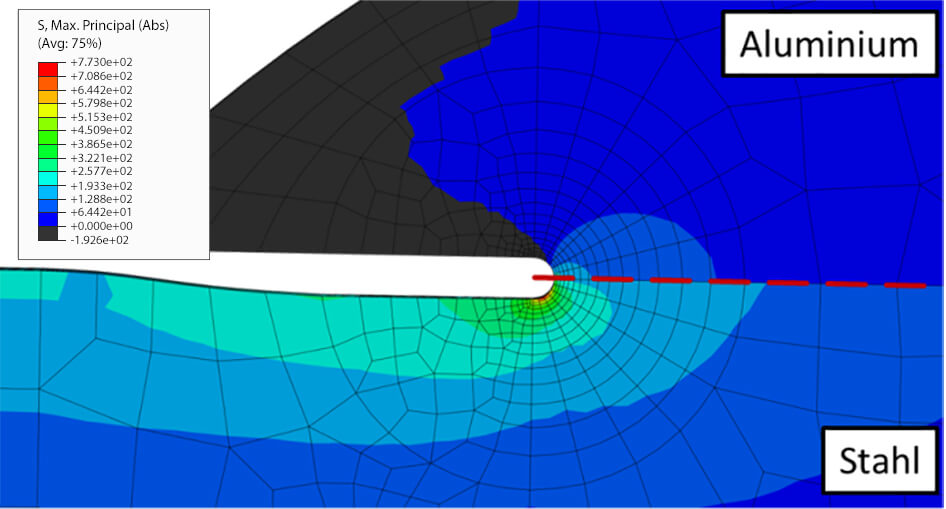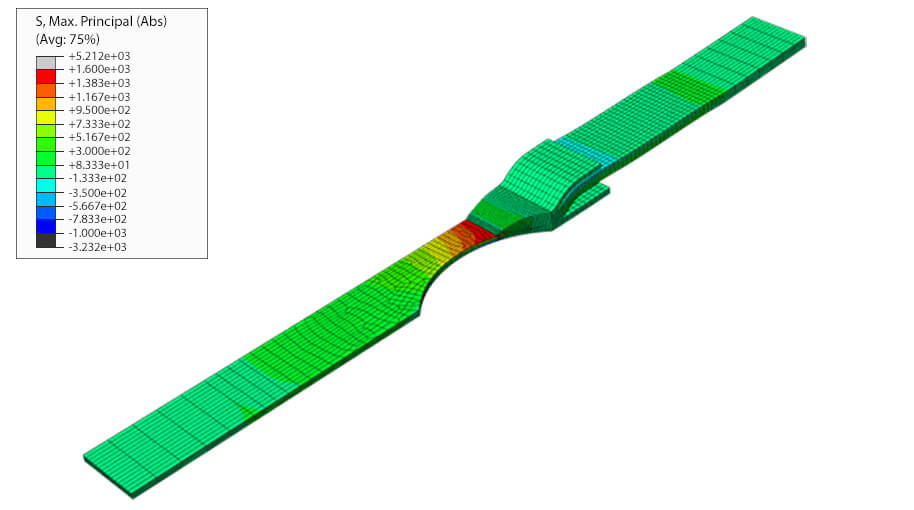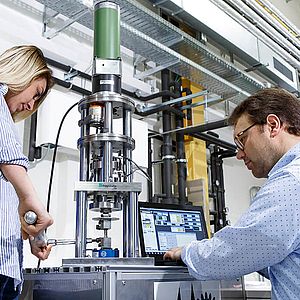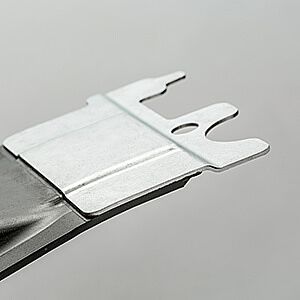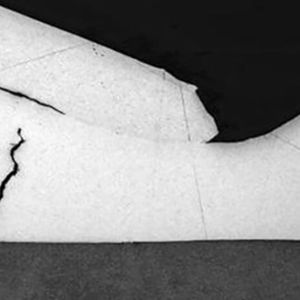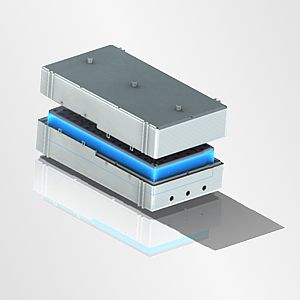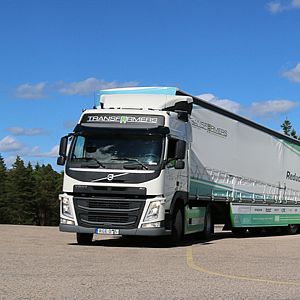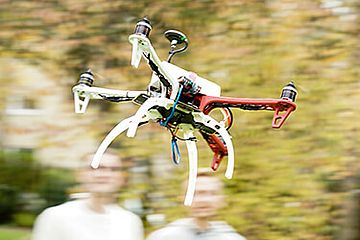Fatigue strength of EMPT-welded aluminum-steel joints.
Lifetime assessment, joints, multi-material

The automotive industry’s ongoing search for inexpensive lightweight design solutions frequently results in the need to join steel and aluminum alloys. Electromagnetic pulse technology (EMPT) provides a joining process that is far ahead of other processes, such as bonding, especially in terms of joining times. In the project conducted, it was possible to show that the fatigue strength of these joints also meets high standards. In addition, an evaluation concept was developed which enables a reliable design of cyclically loaded EMPT joints.
Mixed welded joints are very important for future innovative structures in lightweight design as they can be used to implement components that specifically combine high strength and low weight. Electromagnetic pulse technology (EMPT) represents an innovative process for creating such joints. The sheets to be joined are accelerated to high speeds by a pulsed electromagnetic field forming a substance-to-substance bond.
Micrographs from metallographic investigations show that a good bond exists between the joined sheets of similar aluminum alloys. A wave-like bonding structure forms in the joint zone due to the high relative displacement of the sheets during the joining process. With aluminum-steel joints, however, the micrographs do not show any clearly defined joint zone in the bonding region. Nevertheless, these bonds exhibit high strength.
Tests were carried out on tensile shear and tensile peel specimens to qualify the joints with regard to fatigue strength. The investigations focused on the question: “Is it possible to evaluate and design EMPT-bonded joints using the concepts already known from classic welded joints?”
The fatigue strength tests showed that the actual joint zone withstood the fluctuating load. In all specimens, crack initiation always occurred in the sharp root notches of the overlap joints under cyclic loading. In the aluminum joints, crack propagation always took place through the base metal. This behavior was also observed in the aluminum-steel specimens under peel stress.
In the aluminum-steel specimens under shear stress, the joint zone had such high strength that failure was initiated in the aluminum base metal. After a modification of the specimen shape, crack growth was observed in the test series both along the joint zone and also through the steel material. But how is the capacity to withstand stresses to be assessed?
Finite element models of the specimens were used to carry out a fatigue strength assessment. In the models, the crack-like notches were modeled with a standardized reference radius of r = 0,05 mm. An assessment was made using the notch stress approach which represents the standard method for assessing the fatigue strength of welded joints in many areas. It was shown that the locally endurable stresses in all specimens with failure through the aluminum material are comparable to conventionally welded (laser, MIG) aluminum joints. In the aluminum-steel specimens with crack propagation through the joint zone or the steel, the capacity to withstand stresses was the same as for conventionally welded steel-steel joints.
The IGF project “Failure behavior of mixed welded joints under multi-axis crash-like and fluctuating load based on the example of EMPT sheet metal welding”, IGF project no. 17883 N/1, of the research association Schweißen und verwandte Verfahren e.V. [Welding and Allied Processes] of the DVS, Aachener Strasse 172, 40223 Düsseldorf was funded via the AiF, within the framework of the Program for the Promotion of Cooperative Industrial Research (IGF), by the Federal Ministry for Economic Affairs and Energy based on a resolution of the German Bundestag. The project is being carried out together with the Fraunhofer Institute for Mechanics of Materials IWM in Freiburg.
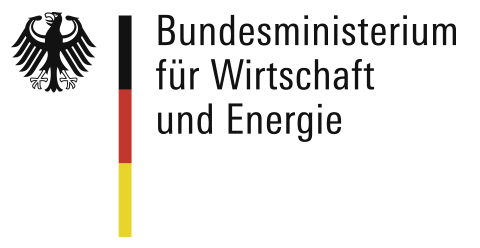
Contact
- Dr. Jörg Baumgartner
- Phone: +49 6151 705-474
- joerg.baumgartner@lbf.fraunhofer.de
- Kai Schnabel, M.Sc.
- Phone: +49 6151 705-451
- kai.schnabel@lbf.fraunhofer.de
